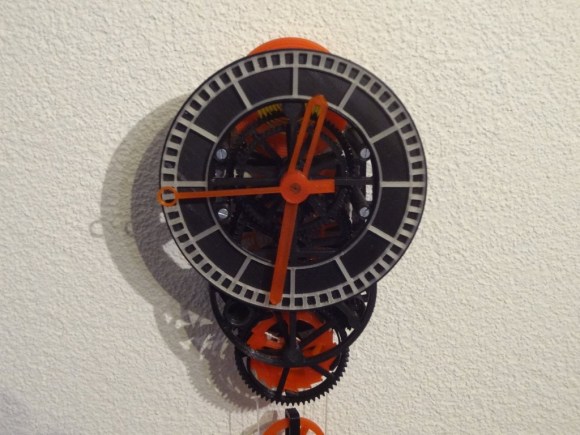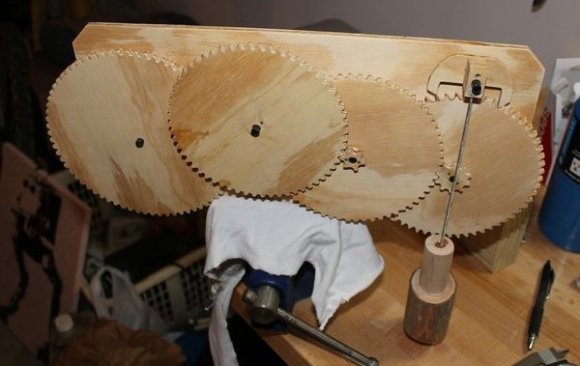As fun as micro-controllers and RTCs are, sometimes it’s truly fascinating to see a completely mechanical clock. Using only gravity this Pendulum Marble Clock (German version) by [Turnvater Janosch] runs for 12 hours at a time and has an accuracy error of less than one second per day!
It works by raising a 2.5kg weight which sinks approximately 1 meter during that 12 hours. A series of steel ball bearings count the minutes, 5 minute increments, and hours. Every minute one ball is released on the track — when the track fills up, trap doors open releasing the balls to the next level. The first level is minutes, the second, 5 minutes, and the third, hours.
The entire thing is made out of wood, plastic gears, brass and steel wire, and an old flat iron (although we’re really not too sure what that’s used for…)
Continue reading “Mechanical Clock Relies On Marbles To Tick”














